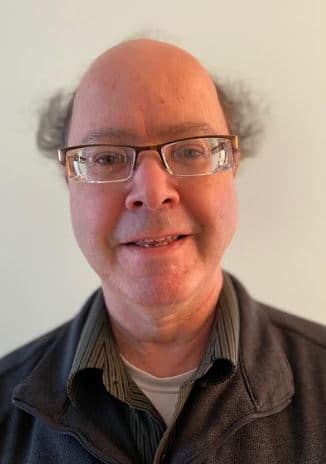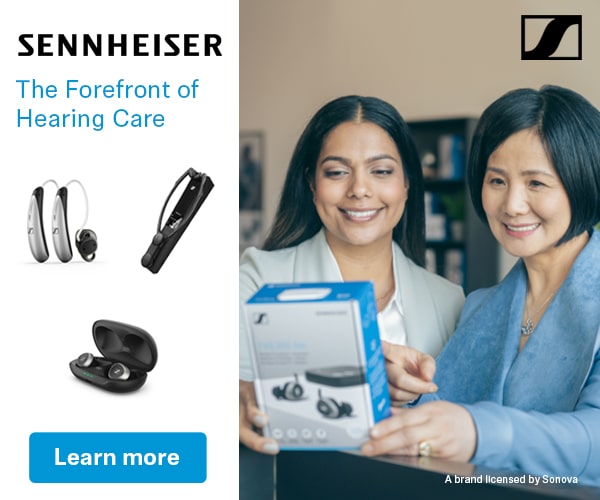Growth and Prosperity
Having proudly served their community for decades, Hometown Audiology helped thousands of patients, often multi-generation families, to improve their hearing ability. As well-respected clinicians, Dr. Kim Miller’s team empowered those entrusted in their care to hear and understand better, at home, work and play, every day. From fellow healthcare providers to teachers, from first responders to grandparents, Kim and her colleagues skillfully brought precious sounds to life for all those in need.
While numerous competitors arose in due course, Hometown’s competitive advantages and stellar reputation drove consistent growth.
Since founding the practice, Kim treated her loyal team, as was her goal with patients, just like family. Her fellow audiologists cherished long tenures, valuing high integrity standards, advanced diagnostic equipment and professionalism. Her care coordinators, with many years of service, played vital roles in ensuring patient satisfaction. While competitors had high staff turnover, Hometown’s esprit de corps was remarkable to patients, families and new team members.
While competitors made sporadic attempts to implement best practices, Hometown consistently set the highest standards. From Client Oriented Scale of Improvement (COSI) to real-ear verification and continuity of care, clinical excellence ruled. Their office environment was comfortable, patient experiences pleasant and pricing competitive. Educational emphasis and evidence-based protocols were integral, knowing well-informed patients are the best hearing care partners.
Favorable growth trends gratified and as Kim envisioned succession plans, she exuded confidence in their strong foundation. While her beloved hearing care industry was rapidly changing, Hometown’s esteemed practice seemed ideally positioned for prosperity.
Change in Market Dynamics
Over the years, Hometown faced mounting challenges from various forms of growing competition. While others adopted aggressive sales tactics, Kim’s team adhered to patient-centric guiding principles. In an evidence-based manner, they genuinely practiced the golden rule, purposely providing educational information needed and personalized solutions necessary.
While their admirable approach served them well historically, they recently noticed more patient resistance, lower adoption rates and less adherence to treatment recommendations. While clinical practices had not changed, help rates declined notably and they wondered why.
Daily, it seemed more patients decided against amplification, even when testing clearly suggested. Beyond typical “I’d like to think about it” responses, Kim and her colleagues sensed that, just as hearing device technology had advanced significantly, their patient counseling techniques required improvement.
With the expanding array of hearing technology options and web-based awareness information, effective discussions with savvy consumers that addressed root concerns and lifestyle needs were vital.
As help rate declines accelerated, device return rates increased and curiously, they were not money related. Despite prescribing properly fit hearing devices skillfully, more patients brought them back, unsatisfied with outcomes. Amid busy schedules, handling product returns and difficult conversations was time consuming. Having encouraged patients to adopt healthy habits and positive behavior changes for decades, perhaps Hometown’s team needed to self-reflect. While their upcoming annual retreat usually rewarded positive progress, Kim knew this one’s undesirable tone was destined.
Weeks later, at Hometown’s much-anticipated annual dinner, all had fun, except Kim. Though colleagues were all smiles, her mind was racing. Just days before, 2019 financial review with her methodical accountant showed dismal results. Profit sharing details, formerly an event highlight, would describe how deteriorating clinical trends translated into minimal bonuses and inability to invest in new testing equipment. While Kim’s aspirations for colleagues were heartfelt, she feared how numbers would speak.
During their breakfast meeting, with food looking delicious, results shared took appetites away. While Hometown’s team felt daily struggles, the depth and breadth of negative results was shocking. Analysis revealed decreased help rates and revenues, along with increased returns and excess time spent managing patient satisfaction issues. Worse yet, team enthusiasm had lost momentum. In stark contrast to the pleasure of rewarding outstanding results in prior years, gasps in the room were obvious and unexpected tension palpable.
While Hometown’s dedicated team expertly diagnosed and treated patients, they were tested to “diagnose and treat” fundamental practice methods in high integrity ways that ensured future success. Especially with a diverse hearing care marketplace, their professional responsibilities demanded the most effective strategies to assist more of those in need.
During a candid meeting, after initial shock receded, they assessed internal locus of control corrective options. While expensive mass media efforts to attract new patients were the norm, it was mission critical they invest in systematic ways to increase help rates, decrease returns and optimize clinical efficiency.
Discovery of Motivational Interviewing (MI)
As Kim’s team brainstormed on 2020 strategic plans, they urgently contacted other best practices. While pearls of wisdom were shared by progressive hearing care industry colleagues, Hometown’s solution set evaluation explored behavior change processes with proven track records in other consultative specialties.
At a pivotal weekly meeting, an exciting breakthrough inspired them.
In researching proven behavior change methods, they learned Motivational Interviewing (MI) was frequently utilized in other counseling scenarios with psychologic components such as smoking cessation and drug addiction. Peer-reviewed articles highlighting how MI was effectively applied in other care settings convinced them of the necessity to become audiologic subject matter experts. From their seasoned perspectives, these interpersonal techniques had great potential to benefit all involved, particularly patients and their families.
Evidently MI was patient-centric, empathetic and purposeful. As hearing care professionals, it was profound to rediscover the importance of being active listeners, accurately and kindly reflecting back notable comments shared during consultations.
They learned about how to understand and carefully manage patient ambivalence, knowing this was crucial to fostering consequential behavior change. To their delight, in addition to highly cited literature about best practices in related specialties, online resources such as You Tube application examples were informative and entertaining.
By analogy, when new hearing devices were introduced, their features and benefits were shared with patients immediately. Why was it then, given the wealth of impressive research, that their audiology profession had not previously heard about or effectively applied MI? Suddenly, perhaps belatedly, their enlightened pathway to practice growth was in sight, in mind and the right fit.
Determined their practice would strive to maximize benefit from MI techniques, dedicated team training was instituted. They learned how to practice the Golden R.U.L.E., focused on Resisting the righting reflex and Understanding patients’ motivations, while Listening to and Empowering them. In doing so they became well-versed with starter phrases such as “If I’m hearing you correctly” along with playback phrases like “Is that what you are feeling?”
Their thoughtful Readiness Ruler supported patient self-efficacy by applying expertise with micro skills including rolling with resistance, developing discrepancies and agenda setting.
Their Decisional Balance Sheet empathetically framed counseling conversations by outlining advantages and disadvantages of making no change compared to adopting treatment options. As clinicians consistently practiced asking these specific questions, natural responses guided the process towards healthy decisions.
Their audiologists integrated the OARS approach to MI, practicing effective phrases to trigger collaborative conversations:
- They asked Open-ending questions like “How can I help you? instead of simple questions easily satisfied with “yes” or “no” answers.
- They followed with Affirmations which recognized strengths and successes such as “You seem like a person who can accomplish what you set your mind to.”
- They concentrated on Reflections, indicating active listening and mutual understanding.
- Finally, during each patient interaction, they Summarized discussions to show interest, recap key points and segue into treatment dialogue.
MI and Increased Patient Care
In the coming months, as confidence grew, help rates increased dramatically. Clearly, stronger connections were being made between Hometown and their patients, in addition to patients with listening environments. As intuitive counseling patterns developed, time saved by quicker conversations was music to their ears. Further, as patients were happier with self-motivated decision-making process, many chose value-added assistive technology which brought more precious sounds to life.
As a capstone, measurably better adherence to treatment recommendations triggered patient delight, advocacy and valuable referrals.
As Hometown’s success story spread, other industry leaders, regionally and nationally, sought advice about MI application excellence. With full transparency, they shared their progressive journey, process discoveries and passion for rigorous training integral to amplifying influence.
As their practice growth accelerated during 2020, team spirit rose and all, including Kim, were excited about an upcoming rewards celebration. Driven by talented teamwork, more patients experienced the joy of hearing, aspiring careers were bolstered and as a source of immense pride, they were serving to elevate the profession.
About the Authors
 David Citron, III, Ph.D., FAAA, Audiologist/Founder, South Shore Hearing Center, South Weymouth, MA. In 2016, Dr. Citron sold South Shore Hearing Center through private equity funding. At present, he is CEO of David Citron and Associates, an audiology practice management and customer excellence firm. Dr. Citron received his undergraduate degree in speech pathology and audiology in 1971 from Northern Illinois University, his Master’s Degree in Audiology from the University of Oklahoma Health Sciences Center in 1972, and his Ph.D. in Audiology in 1979 from Purdue University with an outside area in counseling.
David Citron, III, Ph.D., FAAA, Audiologist/Founder, South Shore Hearing Center, South Weymouth, MA. In 2016, Dr. Citron sold South Shore Hearing Center through private equity funding. At present, he is CEO of David Citron and Associates, an audiology practice management and customer excellence firm. Dr. Citron received his undergraduate degree in speech pathology and audiology in 1971 from Northern Illinois University, his Master’s Degree in Audiology from the University of Oklahoma Health Sciences Center in 1972, and his Ph.D. in Audiology in 1979 from Purdue University with an outside area in counseling.
Dr. Citron is a founder of the American Academy of Audiology (AAA), and served on the Academy’s Balance Disorders Task Force and its Committee on Adult Hearing Aid Guidelines. He is a fellow member of the Academy of Doctors of Audiology, serving as its president in 1988-1990 when the blueprint for the Doctor of Audiology (Au.D.) was developed. Currently, Dr. Citron is on the Board of Trustees of the American Academy of Audiology Foundation.
 Bruce Essman, B.S. Finance, is the founder and CEO of High Definition Impressions, HDI. His collaborative pursuits are intently focused on empowering healthcare experts with insightful HealthScapes® concepts which educationally map out patients’ journeys to well-informed decisions. His original development of proprietary hearing health industry content at a premier academic center over a decade ago triggered a passion for co-creating novel, patient-centric and practice branded programs which help high integrity specialists to more effectively translate peer-reviewed research in patient friendly ways. His entrepreneurial engagement with hearing health practices nationwide and dedication to “diagnosing and treating” grassroots educational marketing initiatives is strategically driven by an empathetic desire to creatively promote valuable research in omni-channel ways which maximally benefit patients, providers, practices, communities and rapidly changing medical professions.
Bruce Essman, B.S. Finance, is the founder and CEO of High Definition Impressions, HDI. His collaborative pursuits are intently focused on empowering healthcare experts with insightful HealthScapes® concepts which educationally map out patients’ journeys to well-informed decisions. His original development of proprietary hearing health industry content at a premier academic center over a decade ago triggered a passion for co-creating novel, patient-centric and practice branded programs which help high integrity specialists to more effectively translate peer-reviewed research in patient friendly ways. His entrepreneurial engagement with hearing health practices nationwide and dedication to “diagnosing and treating” grassroots educational marketing initiatives is strategically driven by an empathetic desire to creatively promote valuable research in omni-channel ways which maximally benefit patients, providers, practices, communities and rapidly changing medical professions.
**image credit Rich McFadden, USAF






